This is a small village located in a deep valley of Cap de Creus, on the southern slope of Verdera Mountains, isolated and nearly stuck in the medieval period when it was created. The views from this village from the hillside are impressive. Today we have been in the Vall de la Santa Creu, in Port de la Selva.
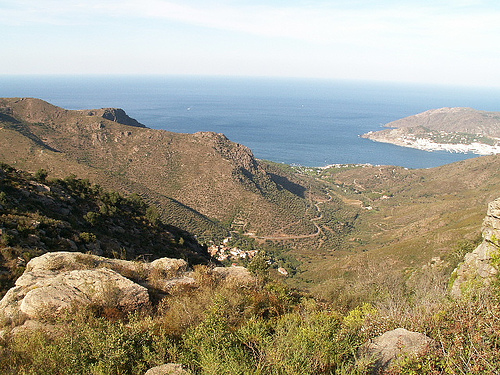
Vall de la Santa Creu, in the middle of Cape of Creus, Port de la Selva, Costa Brava, Spain
The origin of this little village is linked to the monastery of Sant Pere de Rodes, to which it is still connected by a forest track. Indeed, the monks gave this land to the inhabitants of the valley, who depended legally on the monastery (remember we are talking about the feudal era), in exchange for an annual fee. In 1787, by order of Carlos III spanish king, and in full decline of the monastery activity, Vall de la Santa Creu village became part of the municipality of Port de la Selva.
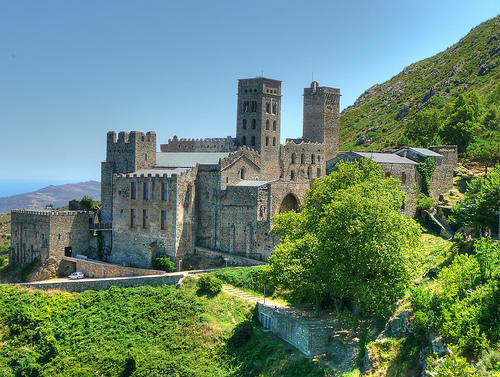
Monastery of Sant Pere de Rodes is located near Vall de la Santa Creu
Coming down from the hillside to the valley you will feel a great silence, broken only by the Tramontane wind which usually blows hard. Nowadays the village consists of about thirty houses (many of them are really cottages), some restored, but retaining the medieval charm. The streets are small and paved with rocks, as in the past. Traditionally these people sustained from the exploitation of their fields, vineyards and olive trees, many of which are still planted. In golden times Vall de la Santa Creu had a population of 200 people, but today most are second homes and it is possible that in middle winter you find absolutely nobody in the village.
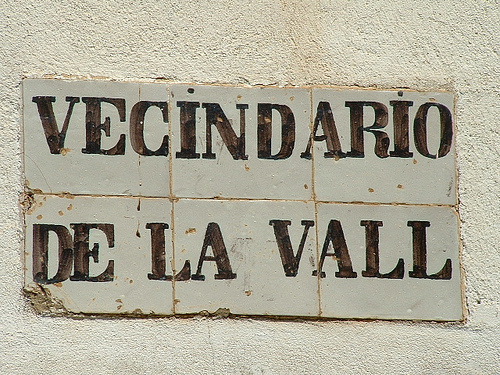
Ancient panel at the entrance of Vall de la Santa Creu village
On coming in the village, on the right, you find the church of Sant Fruitós de la Vall, of the XVIth and XVIIth centuries, built on a single nave and with a bell. In front of it is the cemetery, next to the parish, which is closed. The village has three half-hidden sources. The most curious, the Font d’en Garlapà, is in a magnificent square with four giant platanaceae trunks that make a perfect shade on sunny days, if you sit on the stone benches in the square.
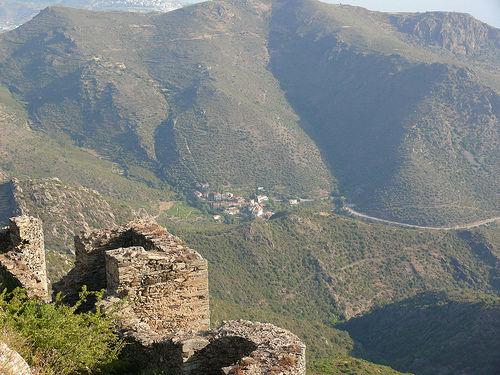
Scenic views from Vall de la Santa Creu, from Monastery of Sant Pere de Rodes
Through Vall de la Santa Creu crosses a small stream having the same name of the village, which formerly was used to run several mills, as those of d’en Pairet or Canavall. In addition to the forest track that links it to the monastery of Sant Pere de Rodes, another path joins the village with Llançà, through the Coll Perer mountain.
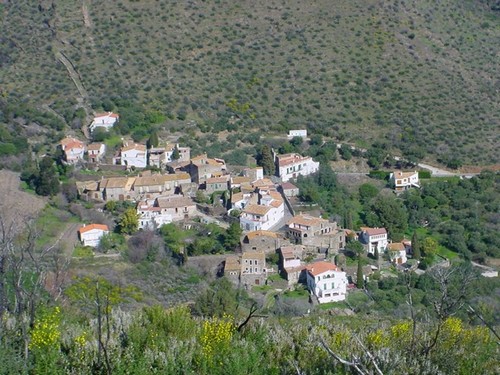
As far as we descende through the valley towards the village we see its actual little dimensions
Vall de la Santa Creu is worth a visit if you go to Port de la Selva village and most of all if you visit the very important Sant Pere de Rodes monastery, the main church, by its historical value, in Costa Brava.







